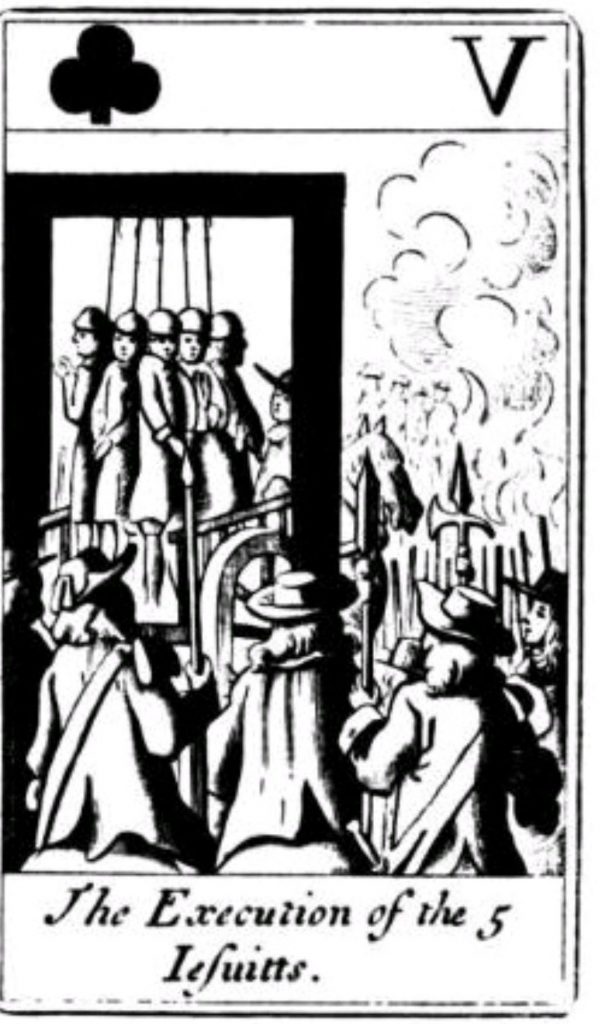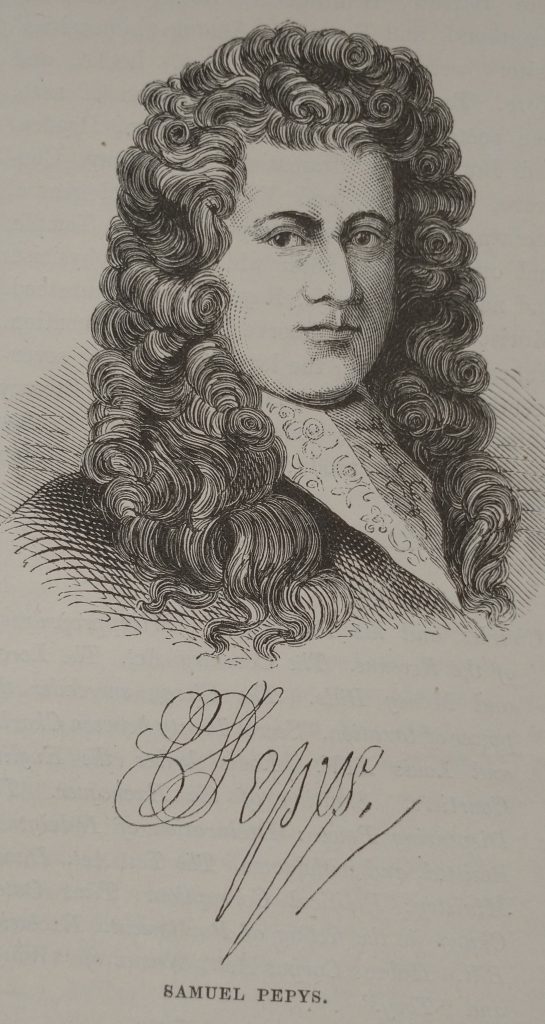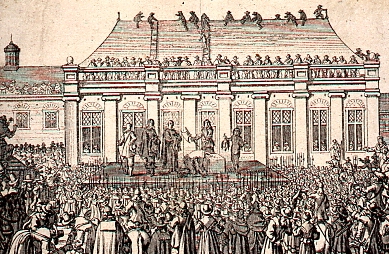
Titus Oates was a con-man. He accused leading Catholics of participating in a plot to kill King Charles II and restore a Catholic monarchy. Among his targets were the Queen, and the King’s Brother’s wife.
Titus Oates had a complicated past. He was a Baptist who turned to the Church of England on the Restoration of King Charles II. He went to Cambridge where he was accused of being a ‘Great Dunce’ and never took his degree. His next about turn saw him in St Omer to train as a Jesuit. He accused a man, whose job he wanted, of sodomy. Then, he became a Naval Chaplain. But he was, himself, accused of buggery and dismissed from the Navy. He was received into the Catholic Church while, at the same time, he wrote a series of anti-Catholic Pamphlets. He made accusations against over 500 people. This became known as the Popish Plot.
As a result, twenty-two people were executed, some ‘Hanged, Drawn and Quartered’ because of Oates’ baseless accusations. The Diarist, Samuel Pepys, was caught up in the anti-Catholic frenzy. Pepys was Secretary of the Navy during the Plot and was close to the Catholic, James, Duke of York. He was accused of selling secrets to the French. Awaiting trial for treason, he was imprisoned in the Tower of London. Eventually, he was able to clear himself and resume public life.

It was only with the accession of James II that the climate of opinion changed. Then Titus Oates was found guilty of perjury. Perjury was not punishable with death, so Oates’ punishment was a long-drawn-out affair instead. He was sentenced to be imprisoned for life. And ‘whipped through the streets of London for five days a year for the remainder of his life.’
Oates was put in the pillory at Westminster Hall, where passers-by pelted him with eggs. He was again pilloried the next day in the City. On the third day, stripped, tied to a cart, and whipped from Aldgate to Newgate. The following day he was whipped from Newgate to Tyburn. (Source Wikipedia)
However, when the Catholic King, James II was, deposed and replaced by the joint Protestant monarchs William and Mary in 1689, Titus Oates was released and given a pension. He died in 1705.
For Pepys at the Execution of Charles I see my post here.
First Published in 2024, republished in 2025

